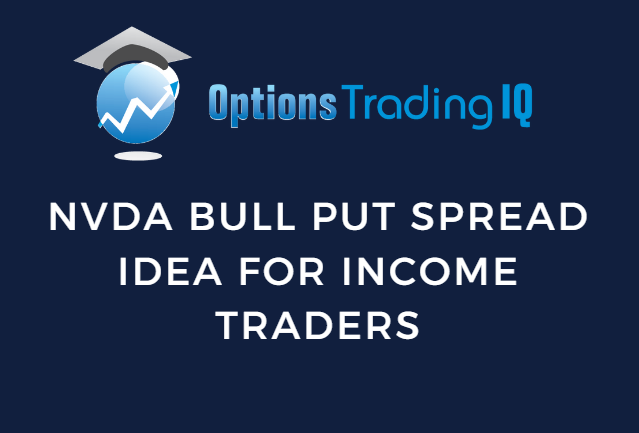

Nvidia stock continues to show amazing strength and is above the 21, 50 and 200-day moving averages.
Today, we’re looking at a bull put spread. As a reminder, a bull put spread is a defined risk strategy, so you always know the worst-case scenario in advance.
This type of trade will profit if NVDA stock trades sideways or higher and even sometimes if it trades slightly lower.
With NVDA stock trading around 490, if we use the October expiration, we can sell a 425 put and buy a 420 put for around $0.75.
Selling this spread would generate roughly $75 in premium with a maximum risk of $425.
If the spread expires worthless that would be a 17.65% return in seven weeks provided NVDA stock is above 425 at expiration.
The maximum loss would occur if NVDA stock closes below 420 on October 20, which would see the premium seller lose $425 on the trade.
The breakeven point for the trade is 424.25. which is calculated as 425 less the $0.75 option premium per contract.
I would set a stop loss / adjustment point if NVDA drops below 455. Otherwise, another good rule of thumb is to limit the loss to the amount of premium received which in this case would be $75.
Sticking to this stop loss level will help avoid large losses if the trade goes south.
If you have any questions on this, please let me know.
We hope you enjoyed this NVDA bull put spread idea.
If you have any questions, please send an email or leave a comment below.
Trade safe!
Disclaimer: The information above is for educational purposes only and should not be treated as investment advice. The strategy presented would not be suitable for investors who are not familiar with exchange traded options. Any readers interested in this strategy should do their own research and seek advice from a licensed financial adviser.











Dear Gavin, thank you very much for regularly sharing your trade ideas. With the above one, now, at the end of October, we can see that if you would go for that trade, you would have been closing it, since NVDA made ugly fall lately.
But my question is not about it. You often suggest to put a stop loss order. Which I find quite hard sometimes – for the following reasons.
If I understand correctly, the mechanics of stop loss order is following. Once the asset or option combination crosses certain value, the broker would place a MARKET order to close the position (positions). Which means (especially for options) that if overnight the underlying has made significant change, the options can make even sharper move and the market order may be placed to actually close at much higher losses than you limit. How do you deal with that?
Also, some brokers take extra charge for tracking stop-loss orders for options, which may affect result in much more extent than commissions.
Also, in the above example – you use 455 as a price for possible indicator to closing the order. May I ask you how did you figured out that namely price?
Thank you!
Hi Dimitry, I set price alerts and then close the spread manually. I don’t use automated stop losses for the exact reason you mentioned – getting bad fills. Overnight gaps are a risk, yes, but that’s no different to stock trading. To set the price alert, I follow the T+0 line to the point where my max loss is. Let me know if you have any other questions.